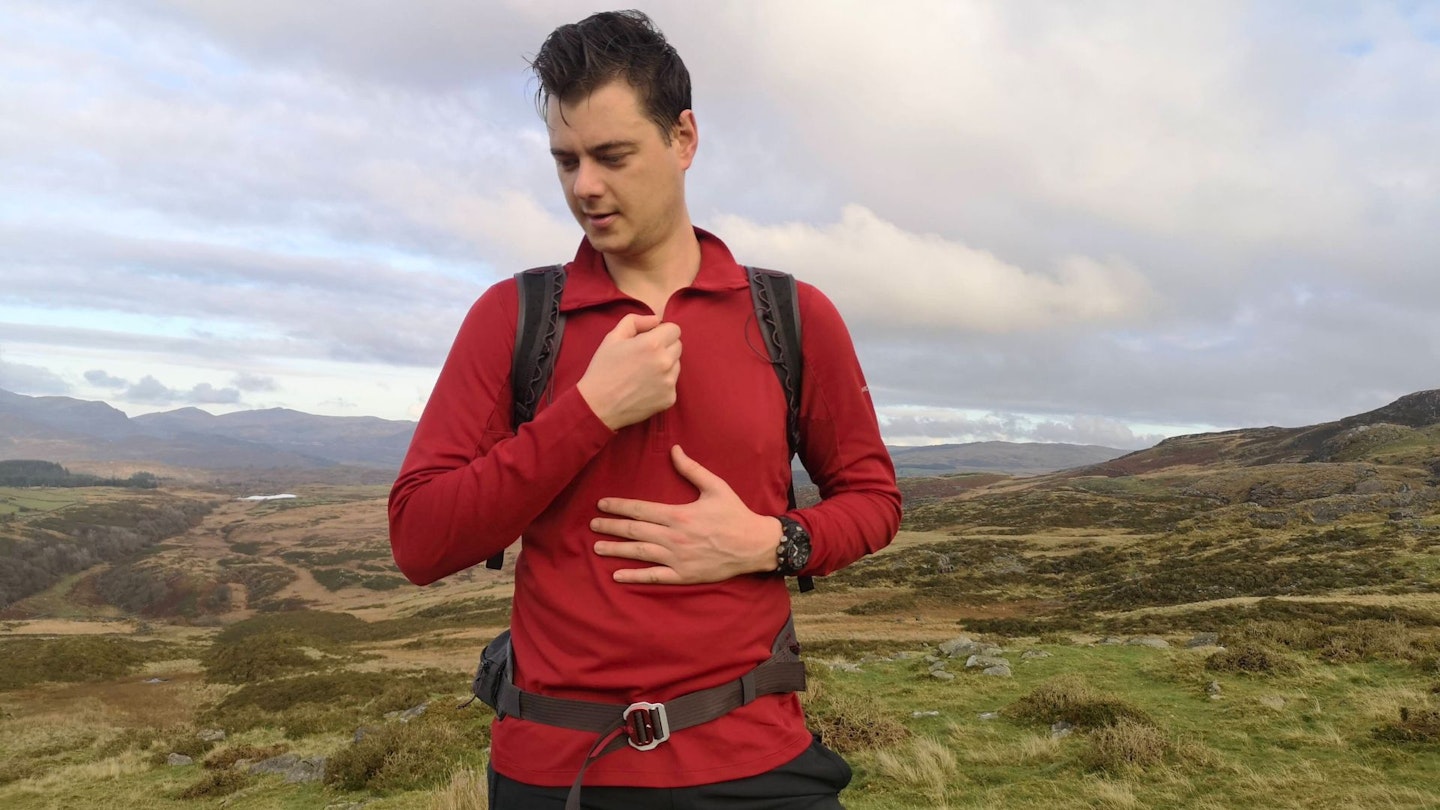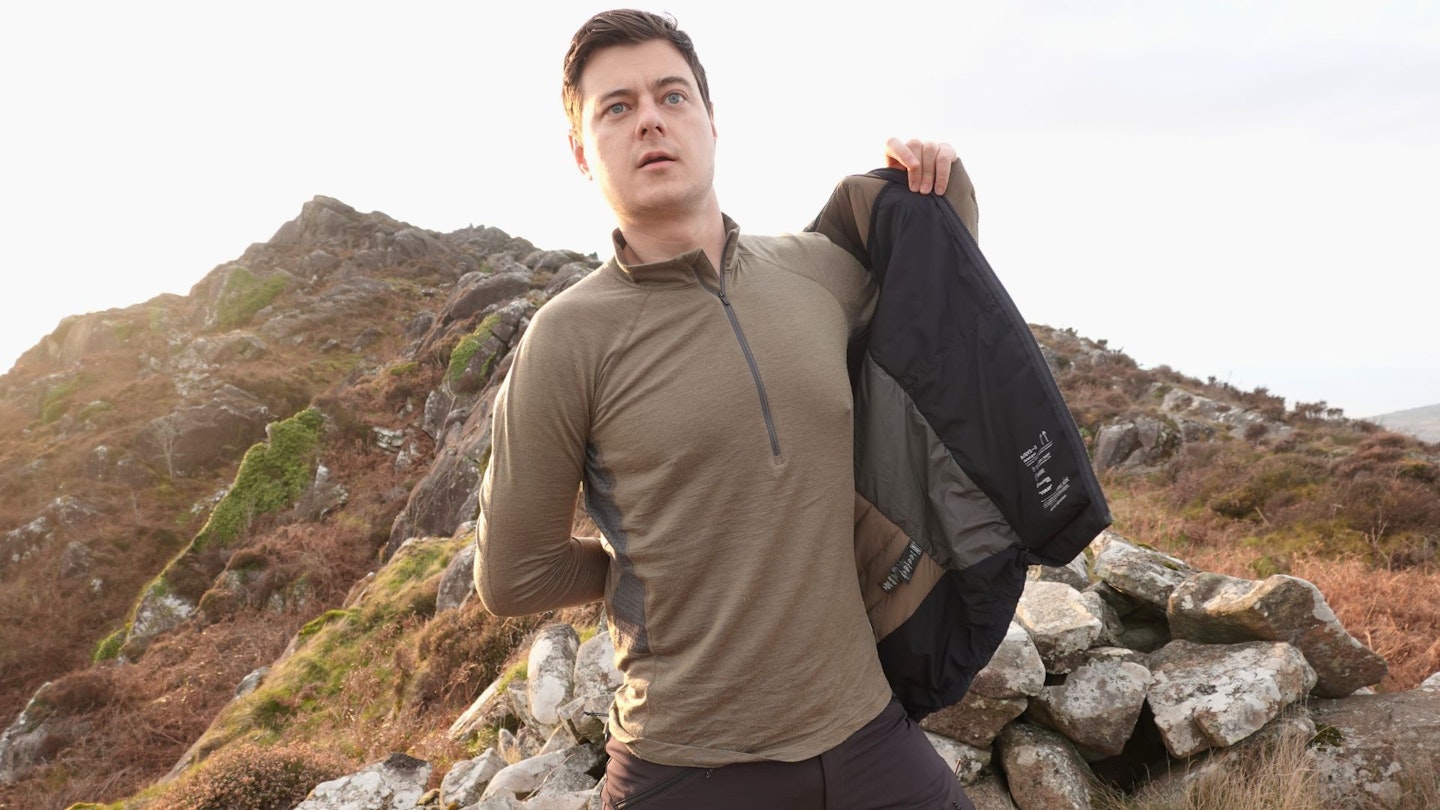Two hikers go on a trek into the hills; one is wearing a base layer, mid layer, and hiking jacket outer layer, the other is wearing a t-shirt and a thick jacket. While standing in the car park, hiker number two is very happy with their thick jacket, but they soon regret their wardrobe choice as they march up the hills.
The thick jacket traps too much warmth and they overheat. But as soon as they remove it, they’re too cold. Meanwhile, hiker number one is very comfortable. The layering of lighter garments makes it easier for the body to move perspiration away from the body, and it's easier to regulate body temperature because they can remove or add layers without quickly getting too cold or hot.
What are the best hiking base layers of 2025?
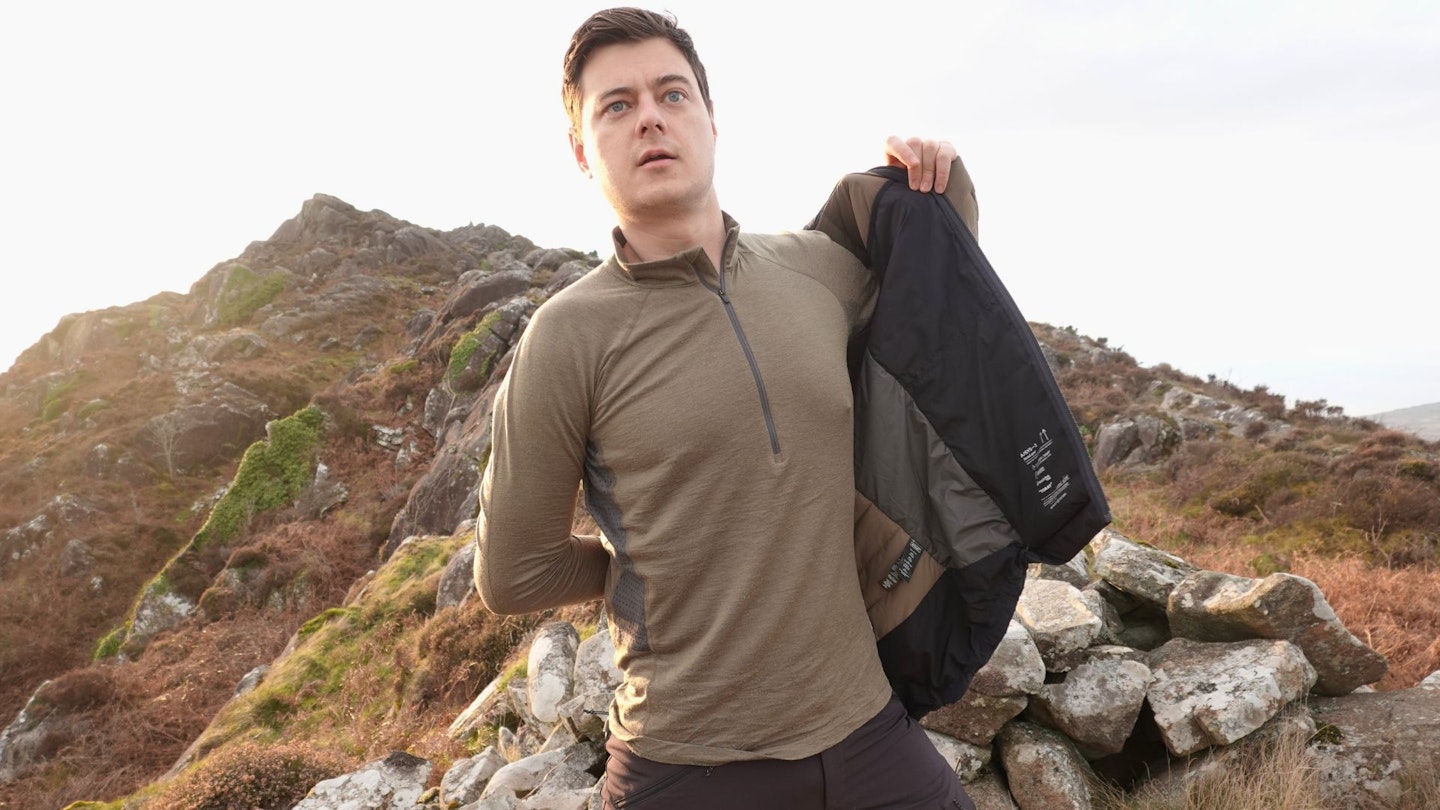
One of the first pieces of advice you’re told about hiking is 'layer up'. And the first piece of a layering system is the base layer. This is our guide to the best base layers to make your hiking experience much more comfortable.
Best base layer overall: Fjällräven Abisko Day Hike
Best technical base layer: Artilect Flatiron 185 Crew
Best value base layer: Craghoppers NosiLife Abel Long Sleeved T-Shirt
How we tested the best base layers

When the winter is on the horizon and the temperature starts to drop, we can’t wait to reach for the base layers and build our winter layering system.
We test base layers for performance, comfort, and durability. We find out if their features and designs work in demanding real world environments, and also at other important things such as sustainability.
Check out how we test out kit for more info.
Best hiking base layers reviewed:
Lightweight, wicking, quick-drying, well-fitting and so comfortable you’ll hardly notice you’re wearing it, this is the kind of base layer you could imagine a team of elves weaving for Frodo at Rivendell, if he told them he needed technical hiking kit for his upcoming backpacking trip to Mordor.
This is very much a go anywhere, do anything base layer, designed to look as good on the high street as it does on the hill, as we’ve come to expect from everything Fjällräven produces.
Available in both short sleeves and long sleeves (we’ve tested both), this is about as close to perfection as you can get for a next-to-skin layer walking layer in everything but the dead of winter. For a start, it weighs next to nothing at 164g (men’s M).
We’d call it a regular fit, with enough room inside to allow air to circulate, but without feeling at all loose or baggy. The long-sleeved version probably isn’t the best we’ve tested in terms of pure breathability, so go for the short-sleeved option if you’re planning to walk in high summer. But for anything except the hottest weather, it will keep you cool, dry and comfortable.
Find the Women's Abisko Day Hike here.
Pros
- Very lightweight and quick-drying
- So comfortable you hardly notice it
- Well-fitting: not too tight, neither too baggy
- Can be worn on all but the coldest days; T-shirt option for high summer
Cons
- Low on features
| RRP: | £75 |
| Weight: | 164g |
| Sizes available: | XS-XXL |
| Fabric composition: | 88% recycled polyester, 12% polyester |
Anything made from merino tends to land in the ‘premium’ bracket of outdoor gear – where everything claims to be “lightweight yet [insert buzzword here]”. In this case, “warm” fits best. The Flatiron 185 weighs just 177g, which is impressive given it’s made from 91% merino wool.
I tested it against some tempestuous winds along the gritstone edges of the Peak District, and remained perfectly cosy. Merino’s insulating powers are well-known, and here they’re boosted by a snug fit, thumb loops and long cut.
But the Flatiron 185 also manages to be highly breathable, with wide ventilation panels that run from sleeve to underarm and down the torso. It’s soft next to the skin, never itchy, and layers smoothly under a fleece or shell, with flat seams that avoid chafing and a cut that doesn’t ride up beneath a rucksack strap.
You can also lift your arms without dragging the hem up, which is great for scrambling or climbing. That said, this base layer won’t disappoint on crisp countryside walks. Like other premium layers, the Flatiron 185 feels like it’s breaking the rules a bit: it’s warm, light and breathable all at once.
Find the men's Artilect Flatiron 185 Crew here.
Pros
- Lightweight yet warm
- Thumb loops and long cut boost warmth
- Highly breathable thanks to ventilation panels
- Soft next to the skin
Cons
- Some might prefer a more relaxed fit
| RRP: | £110 |
| Weight: | 177g |
| Sizes available: | Women’s XS-XL; men’s XS-XXL |
| Fabric composition: | 91% merino wool; 9% nylon |
For most walkers, whether you’re out for a local stroll or striding up a hill, the Nosilife Able (women’s version, NosiLife Akona) will more than do the job as your base layer of choice.
It’s technical without being over the top, has a nice fit that doesn’t feel too tight, and comes in five understated colours which (in our humble opinion) look very at home both in an outdoor environment and anywhere else you might like to wear it.
The material is a blend of polyester, cotton and elastane, so has a soft and stretchy feel to it. We tested it through some of the hottest days of summer and the breathability felt good, and it offered decent warmth when the temperatures dropped too.
In terms of features, the built-in Nosilife insect repellent treatment is designed to protect you from insect bites for the lifespan of the product, which means it will be coming with us on every trip to the Scottish Highlands from now on.
You also get anti-odour technology to keep your top fresh for longer, which all adds up to make this an excellent walking layer at a fantastic price.
Find the women's version here.
Pros
- Technical without being over the top
- Nice fit, not too tight
- Understated colourways
- Soft and stretchy material
- Good breathability
- Anti-odour technology
Cons
- Low on features
| RRP: | £45 |
| Weight: | 204g |
| Sizes available: | S-XXXL |
| Fabric composition: | 75% recycled polyester, 22% organic cotton, 4% elastane |
If you appreciate the straightforward things in life, like a well-made cup of tea or a dependable pair of walking boots, then this is the base layer for you. I’d sum it up as a classic crew-neck which performs reasonably well for a decent price.
Made from recycled polyester, it’s not as soft or stretchy as merino, but it’s still comfortable against your skin. I find that it’s surprisingly good at moisture control – even when I wear it for my local Parkrun, which I take way too seriously, it never feels muggy.
There’s two reasons for this: one is that it’s not completely skin-tight, so there’s some airflow. The second is that the fabric is well-designed to wick sweat, as it’s fast drying. The Vonnan has an anti-odour treatment, which I’m always skeptical about (how can that even be possible?), but it’s stayed surprisingly fresh after rigorous use.
At 138g, this base layer gets extra points for being the lightest option I’ve tested, which makes it well-suited to multi-day walking trips. All in all, the Vonnan is a simple yet effective base layer that’s best for milder weather, where you need something a little – but not much – warmer than a t-shirt.
Find the Men's Jack Wolfskin Vonnan here.
Pros
- Good value
- Made from recycled materials
- Reasonably moisture-wicking
- Anti-odour treatments works well
- Very light
Cons
- Not great for cold weather
| RRP: | 40 |
| Weight: | 138g |
| Sizes available: | XS-2XL women; S-2XL men |
| Fabric composition: | 100% polyester |
When you think of Rab gear, you think of mountains, and that’s where we picture the Rivelin performing at its best.
In terms of features, you’re getting almost everything we like to see here in terms of a base layer that delivers everywhere from walks and runs to scrambles and summits, while also doubling up as a decent mid-layer on warmer days.
The main bulk of the fabric is made up of Rab’s patented Dryflo fabric – a lightweight, high-wicking and quick-drying material designed to encourage airflow and stop you clamming up on your walks. In our experience, it works really well, especially when doubled up with the mesh underarm inserts that add an extra layer of breathability.
The Rivelin has a nice loose and stretchy feel to it, without being too baggy, and the material is soft and comfortable against your skin. It isn’t the warmest base layer we’ve ever tested, but perfect for walking in probably everything barring the coldest winter days.
The soft and stretchy hood offers extra protection and warmth when needed, and the understated, elasticated thumb loops inside the sleeves stop them riding up. In fact, there isn’t much we don’t like about this top!
Check out the Women's Rab Rivelin Hoody here.
Pros
- Doubles as a mid-layer on warmer days
- Lightweight, high-wicking and quick-drying
- Loose and stretchy, but not baggy
- Soft and comfy
- Handy hood and thumb-loops
Cons
- Not the warmest
| RRP: | £60 |
| Weight: | 294g |
| Sizes available: | S-XXL |
| Fabric composition: | 83% recycled polyester, 12% lyocell, 5% elastane |
On a recent walking trip in northern Italy, I saw almost as many people wearing sun hoodies as there were drinking Apérols. On paper, they make sense: who wouldn’t want a lightweight layer that protects you from the sun and keeps you cool?
However, the sticky point, or the hot and sticky point, is that some trap heat. Luckily, the Shine Solen largely avoids this. I wore it on a warm run in the Peak District, which, as you’ll know, rampant deforestation has left without much shade, and didn’t overheat.
Even in my cupboard, it’s much cooler to touch than other tops. It does get a bit damp from sweat, and can feel oppressive on a humid day, but it’s fairly quick to dry. There’s a drafty feel to it: the fit is relaxed and you can open up the long neck zip for more ventilation.
It’s rated to UPF 50 and there’s a hood featuring a ponytail hole, as well as thumb loops on the sleeves. Everything about this base layer is geared towards practicality in the heat, and I think it does its job pretty well – but its usage is limited to the summer months.
Find the Men's Helly Hansen Shine Solen Half-Zip Sun Hoodie here.
Pros
- Excellent for sun protection
- Reasonably breathable
- Quick to dry
Cons
- No anti-odour treatment
- Could wick moisture more effectively
| RRP: | £70 |
| Weight: | 191g |
| Sizes available: | Women’s XS-XL; men’s S-2XL |
| Fabric composition: | 80% polyamide (recycled), 20% elastane |
Designed as a unisex product to suit male and female walkers, the Woolpower Zip Turtleneck 200 immediately feels like the kind of warm and insulated base layer you could wear when snow’s falling outside and fires are raging in the pub you’re planning to finish your walk in.
The bulk of this top is made up of fine merino wool, which feels warm and soft against your skin while also having plenty of stretch. It’s a close-fitting base layer that hugs your torso, which may not be to everyone’s taste, but at no point on our testing walks have we found it in any way uncomfortable.
The back length is slightly longer than the front, too, so it doesn’t ride up as you move. There’s no escaping the fact that the warmth and insulation on offer here will probably be overkill for walking in summer, so our advice would be to keep it safely stowed away until the cooler months of the year when it really comes into its own.
That said, the zipped neck does offer good ventilation and the Ullfrotté Original 200 fabric is the lightest Woolpower make, creating good airflow to release body heat.
Pros
- Super warm
- Soft and stetchy feel
- Doesn't ride up when you move
- Still reasonably breathable despite the warmth
Cons
- Close-fitting cut won't suit everyone
- Not versatile – overkill for summer
| RRP: | £120 |
| Weight: | 260g |
| Sizes available: | XXS-XXXL |
| Fabric composition: | 60% merino wool, 25% polyester, 13% polyamide, 2% elastane |
There’s no doubt that the Peak Performance Freelight is a sophisticated base layer. It’s made from Polartec Power Grid, meaning that the inside features hundreds of soft ridges in a grid pattern.
Rather than absorbing sweat, it’s supposed to pull it away from your skin, allowing it to evaporate through the gaps. And this does actually seem to work in practice: I found it effective at moisture-wicking when walking up hills in the Peak District.
There’s no escaping that this is a warm layer though, too warm for most summer days. It could easily pass for a midlayer – it’s best to think of it as a lightweight, breathable (thin) fleece, which you can wear on its own on milder days, or add extra layers to in the cold. The fit is relaxed, so I can easily fit a skin-tight base layer underneath.
It’s well-featured too, with a zippered chest pocket – handy for ski passes – as well as an elasticated bottom hem. It’s casual in appearance, which makes it well-suited for everyday wear as well as outdoor activities.
But where this versatile base layer really excels is on strenuous walks on colder days, where it keeps you in that perfect zone of warm-but-not-too-warm.
Find the Men's Peak Performance Freelight Polartec Power Grid Crew here.
Pros
- Super warm yet breathable and lightweight
- Works as a midlayer as well as a baselayer
- Ideal for strenuous colder days
Cons
- Too warm for high summer
- Not great value
| RRP: | £150 |
| Weight: | 155g |
| Sizes available: | XS-XL women; S-2XL men |
| Fabric composition: | 94% polyamide; 6% elastane |
This hybrid base layer employs two different zoned fabrics, combining the benefits of natural and synthetic fibres. The main body is polyester, which has been treated with silver ions to neutralise body odour. Underarm panels are made from a blend of natural merino wool and hard-wearing nylon. It stayed noticeably fresh, even after several wears. As such, it’d be a great choice for multi-day backpacking trips. It also offers great wicking performance, plus decent warmth and durability despite its light weight.
It feels well made, which is evident in the details like low-profile merrow stitching, which resists snags better than conventional flatlock seams. There’s also a stand-up collar and a practical neck zip, though it’s a shame the cuffs lack thumb loops. The Rho has a little stretch but retains its shape well. Admittedly, it only provides moderate warmth, so works best in cool rather than very cold conditions.
But this base layer really excels in day-to-day wearability. It just looks and feels great, so became our go-to pick of all the options here. Having said all that, it’s still overpriced. And there’s no women’s version yet.
Pros
- Fair Trade Certified
- Great fit
- Odour resistant
- Soft and comfortable
- Durable
- Fast wicking
Cons
- No thumb loops
- No women’s version yet
| Weight | 170g |
| Fabric | Phasic ARII (100% polyester) w/ PFC-free DWR; Nucliex 150 (87% RWS-certified merino wool, 13% nylon) panels |
| Men's sizes | S - 2XL |
| Women's sizes | N/A |
Artilect is a relatively new US outdoor brand from Colorado. It makes a complete range of outerwear based on its A/SYS layering system, the foundation of which are its innovative Nuyarn base layers. This is a method of spinning that ‘drafts’ merino wool alongside a core filament fibre – here, nylon.
The results when compared to normal merino are impressive. The brand claims a 5x faster drying time, 35% more stretch, 35% more loft, 50% more durability and 20% less raw materials. Though it’s hard to assess all those, this layer does seem to punch above its weight in terms of warmth, while drying noticeably quicker than other merino rivals. The jury’s out on the durability claim – a lighter 125gsm Artilect base layer we previously tested didn’t last very long, though this thicker top does seem to be going the distance so far.
A zoned construction enhances breathability, with extensive perforated panels in areas like the back and underarms. Construction is first class, with flatlocked seams, thumb loops and a raised collar with a very deep neck zip. The latter is great for dumping heat fast. Fit-wise, the Darkhorse is snug and sculpted, maximising next-to-skin performance and thermal efficiency. It’s undoubtedly an impressive bit of kit, but it is expensive.
Check out the Men's Artilect Darkhouse 185 Zoned here.
Pros
- Warm
- Breathable
- Faster drying than pure merino
- Tougher than core spun merino
Cons
- Snug fit
| Weight | 260g |
| Fabric | Bluesign-approved 185gsm Nuyarn (85% non-mulesed merino, 15% nylon) |
| Men's sizes | XS - 2XL |
| Women's sizes | XS - XL |
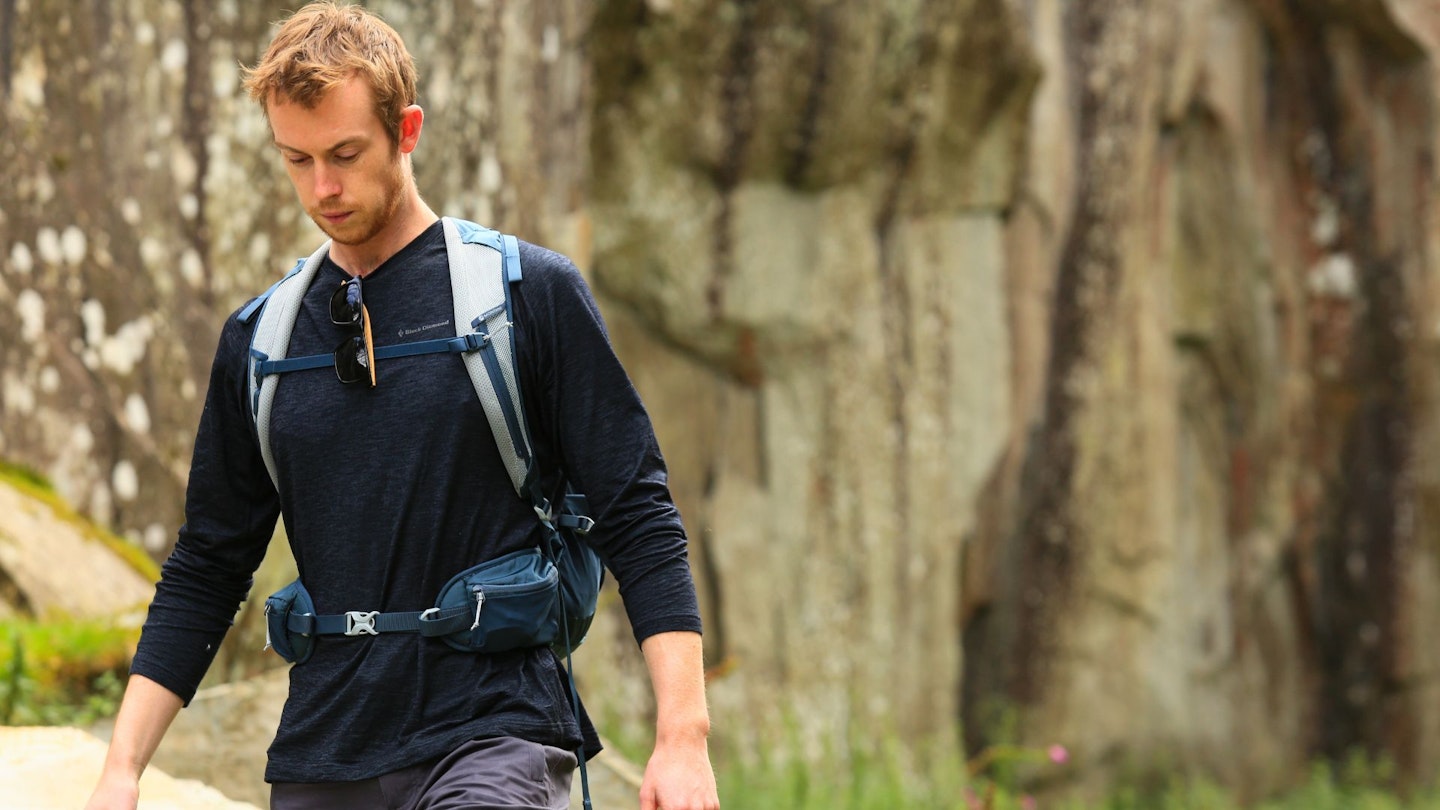 LFTO
LFTOLike the Artilect Darkhorse 185 Zoned ¼ Zip base layer, this one from Black Diamond uses Nuyarn. However, the merino used here is even finer – so the Black Diamond Long Sleeve Rhythm T-Shirt weighs just 121g.
For a garment so lightweight, we were very impressed with its performance. It’s excellent at regulating temperature and is superbly comfortable thanks to the soft fabric and high level of breathability and fast wicking. You could use this for trail running as well, if you wanted to.
The fit is slim, rather than skin tight like many base layers. So, it is quite versatile as a result, but not ideal for really cold conditions.
Since it’s so lightweight, it doesn’t feel particularly rugged. Nuyarn is supposed to be more durable than core spun merino, and indeed we’ve found it to be, but in such as lightweight garment that doesn’t make it bombproof.
Check out the women's version here
Pros
- Excellent temperature regulation
- Natural anti-odour
- Very soft
- Stretchy
- Very lightweight
Cons
- Not the warmest base layer
- Not the most durable
| Weight | 121g |
| Fabric | 90gsm Nuyarn (57% nylon, 43% merino) |
| Men's sizes | S - XL |
| Women's sizes | XS - XL |
Norwegian brand Helly Hansen has been making base layers since the early 1970s. Today, its Lifa layers featuring those distinctive arm stripes are still worn by hikers, skiers, mountaineers and sailors alike. The extensive range includes synthetic, merino wool and hybrid options – including this practical midweight merino option. It’s more than just merino alone though, being lined with fast-wicking polypropylene fibres for superior moisture management.
It proved a great layer for active use in cold weather. We wore just this under a shell on sub-zero winter mountain days and stayed toasty. The two-layer construction seems to outperform most merino fabric blends, as well as the zoned construction of other hybrid layers. It’s comfortable too, not at all itchy with a nice fit. It isn’t baggy but doesn’t feel like it’s been sprayed on either. We’d like a little more length in the arms and body to keep wrists and lower back fully covered during dynamic activity, but this won’t be an issue unless you’re especially long limbed.
There aren’t any thumb loops either, and we’d like a deeper neck zip for ventilation. For durability this layer held up well though, still looking and feeling great after several wears and washes.
Check out the women's version here
Pros
- Good cut
- Very warm
- Wicks well
Cons
- Lacks thumb loops
| Weight | 390g |
| Fabric | 2-layer LIFA construction (57% ZQ-certified merino wool, 43% polypropylene) |
| Men's sizes | S - 2XL |
| Women's sizes | XS - XL |
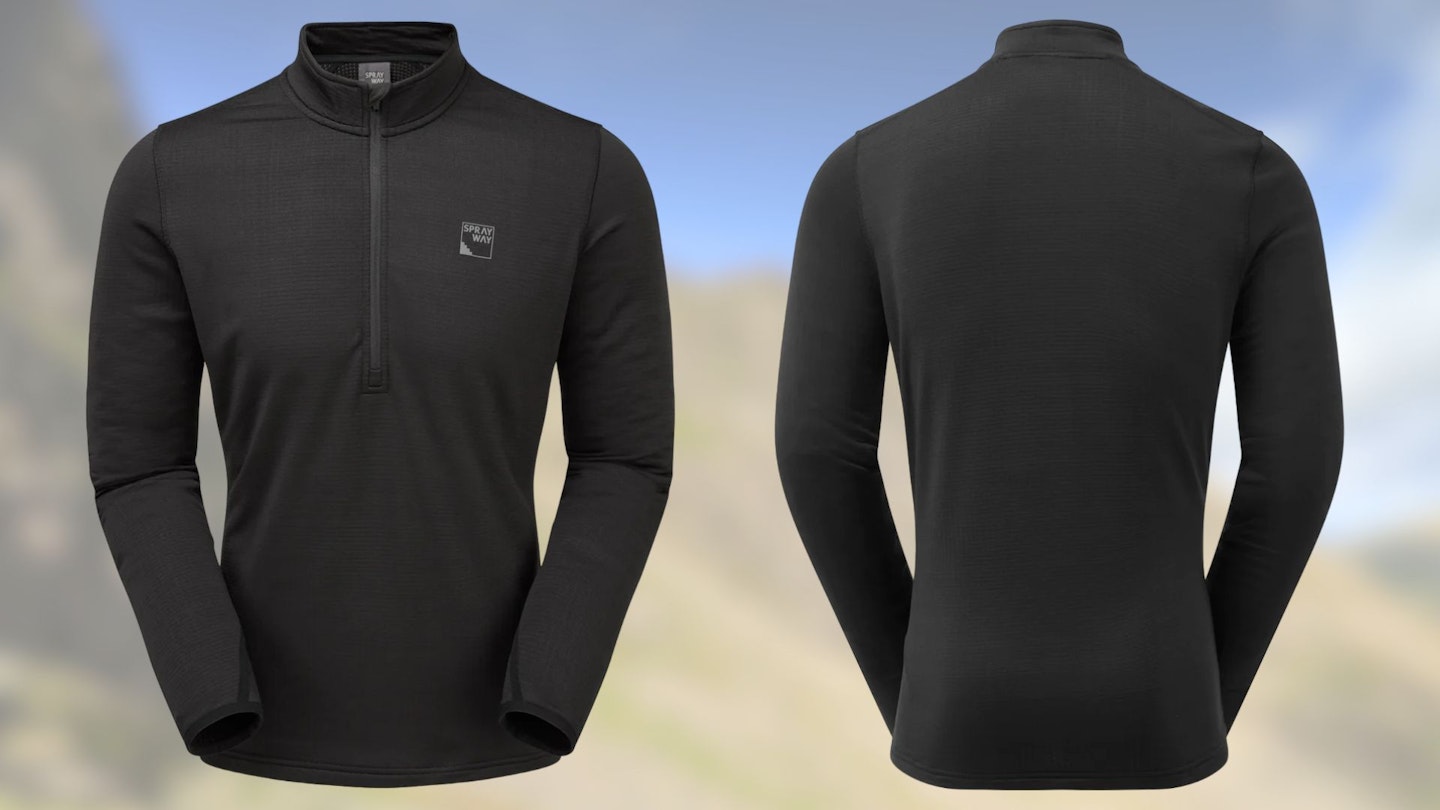
www.outdooraction.co.uk
This cosy synthetic base layer is made from grid stretch fleece that offers great next-to-skin warmth and softness but also wicks extremely well to keep you dry and comfortable. The polyester fabric has a little elastane in the mix to aid freedom of movement. It’s a shame there’s no recycled content though. However, Sprayway is a Fair Wear Foundation member.
In terms of fit, we found it’s reasonably trim, with plenty of length in the arms and handy thumb loops to prevent sleeves riding up. Stretch-bound cuffs hug the wrists, and a raised collar guards against chills. The half zip at the neck isn’t the deepest but did offer us a little ventilation if we started to overheat.
The smooth face of the fabric also slides easily under other layers. Seams are flatlocked, but perhaps a little bulkier than rivals, and don’t feel truly invisible like some. We were conscious of the two seams across the shoulders when wearing a pack, for example. Otherwise, it performed well on test in terms of warmth and moisture management, especially on colder days.
The only real drawback we found is one common to many cheaper synthetic layers – it starts to smell a bit after heavy use, and lacks any in-built odour treatment to counteract this. Also, though it’s a minor niggle, the logo started to peel off the chest after a few washes.
Check out the women's version here
Pros
- Warm
- Soft
- Fast wicking
- Thumb loops
Cons
- Awkward shoulder seam placement
- No odour control treatment
| Weight | 250g |
| Fabric | CoreC Grid (95% polyester, 5% elastane) |
| Men's sizes | S - 2XL |
| Women's sizes | 8 - 18 |
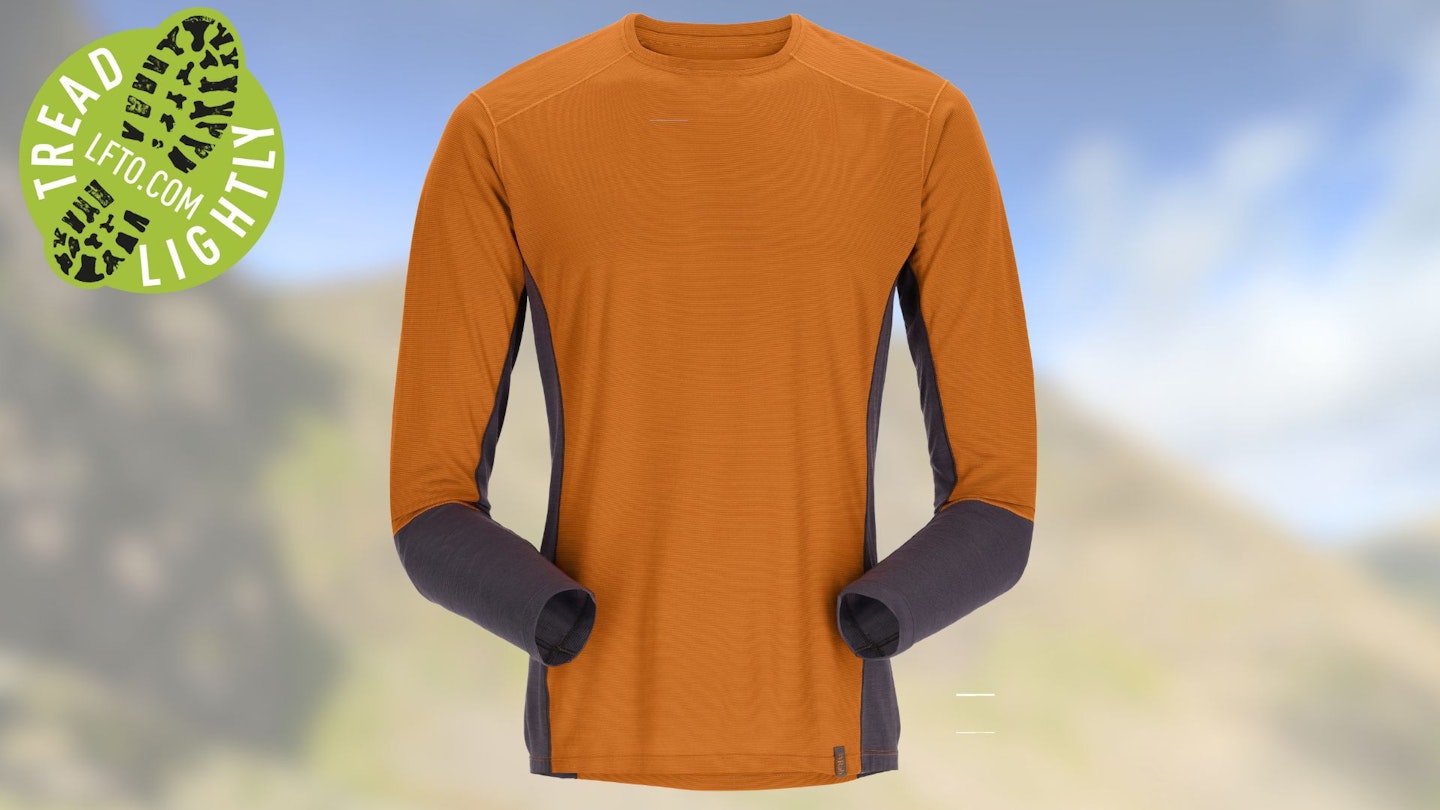
www.gooutdoors.co.uk
Rab’s Syncrino is a 125gsm merino blend base layer tee, made from recycled polyester and merino wool. It offers more warmth than a similar weight synthetic top but has less insulating ability than any of the other options here – you might want a cosier and chunkier layer if you tend to feel the cold.
The fit is fairly relaxed, offering good freedom of movement but perhaps at the slight cost of thermal efficiency. On the other hand, that means it’s a bit more wearable and versatile if you just wear it as a long-sleeved T-shirt in milder spring or autumn weather, rather than as a technical layer. It is soft and comfortable, with minimal itch factor. Seams are low profile, sensibly placed and well finished. The body and sleeves are both nice and long, ensuring full coverage. There are no thumb loops and just a simple crew neck, which does leave the nape a little exposed.
But on test, this layer performed well in the mountains. It’s stretchy enough to permit dynamic movement. It wicks fairly well too, though we were conscious of some dampness under the arms and across our back when wearing a pack. Still, it dried off reasonably quickly. It didn’t pick up unpleasant odours either, even after a week’s continual wear.
Check out the men's version here
Pros
- Soft and comfortable
- Odour-resistant
- Versatile cut
- Rab a Fair Wear Foundation with 'Leader' status
Cons
- Not the warmest
- No thumb loops
| Weight | 170g |
| Fabric | Syncrino 125 (52% partially recycled polyester, 47% merino) |
| Men's sizes | S - 2XL |
| Women's sizes | 8 - 16 |
What to look for in hiking base layers
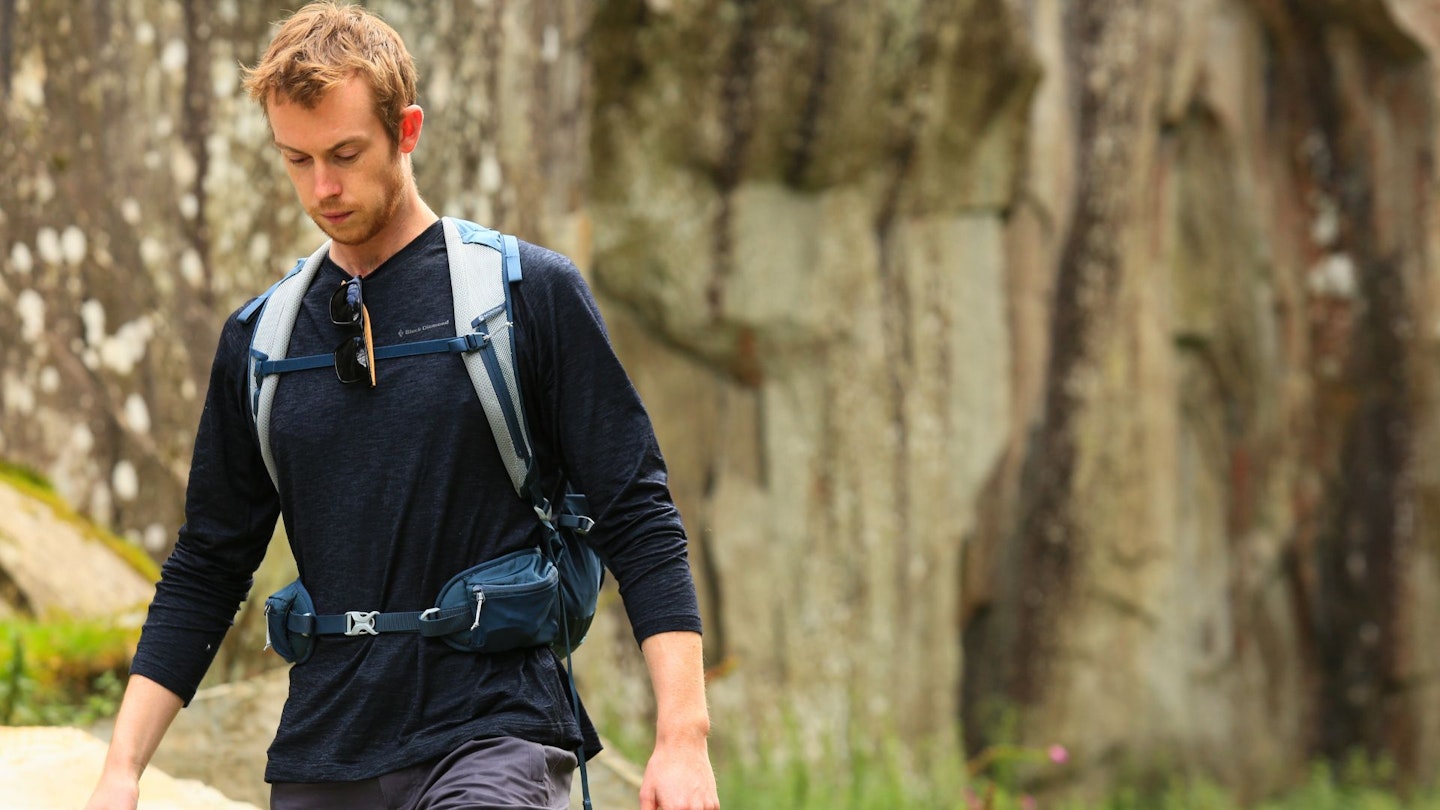
What fabric is best for base layers?
Merino
Merino wool is soft and comfortable, regulates temperature superbly and is naturally anti-bacterial, meaning it resists odours even after prolonged wear. However, it is more expensive and less durable than synthetic fabrics. Check that the wool is responsibly sourced.
Synthetics
Synthetic base layers are usually made from polyester, polypropylene or polyamide (nylon). These fibres wick moisture well, dry quickly and are very durable. Their major downside is that they start to smell after prolonged wear, though many brands now use anti-odour treatments to guard against this.
Bamboo
Bamboo is even softer than cotton, with superior wicking and warmth for weight. However, its main benefit is its sustainability. It is a fast-growing natural fibre that is far less resource intensive to produce compared to merino wool. Nor is it derived from petrochemicals like synthetic fibres.
Hybrids
Hybrid base layers use a blend of yarns to maximise the benefits of different fibres or feature zoned construction, employing fabric panels of different types.
Why not cotton?
Cotton absorbs moisture and then holds onto it, keeping it next to your skin. This lack of wicking and slowness to dry may not be a problem when the weather is warm, but if the temperature drops or the wind picks up it can become chilling very quickly. Cotton is best avoided in the varied and changeable climate of the mountains.
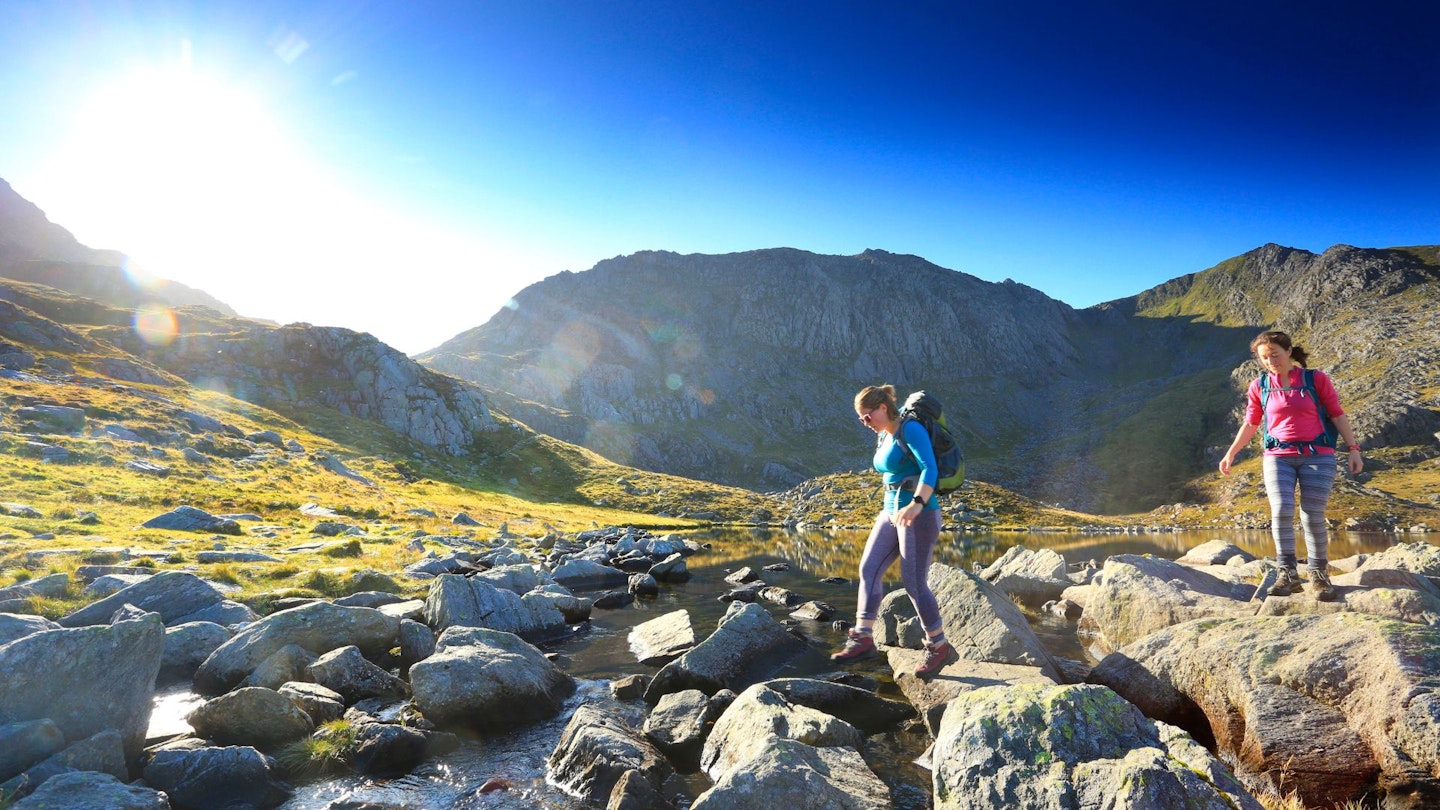
What makes a base layer more comfortable?
Garment patterning and design can make a huge difference to comfort, as well as freedom of movement. Look for flatlock stitching and offset seams to reduce chafing or irritation.
What makes a base layer breathable?
This depends on various factors, including fabric type and quality, weight and weave. But lighter base layers are generally more breathable and therefore better suited to high-output activities.
Are base layers all the same thickness?
Base layers are generally classed as lightweight, midweight or heavyweight. Fabric weight is sometimes expressed in gsm (grams per square metre). A higher gsm usually means a thicker and more durable fabric.
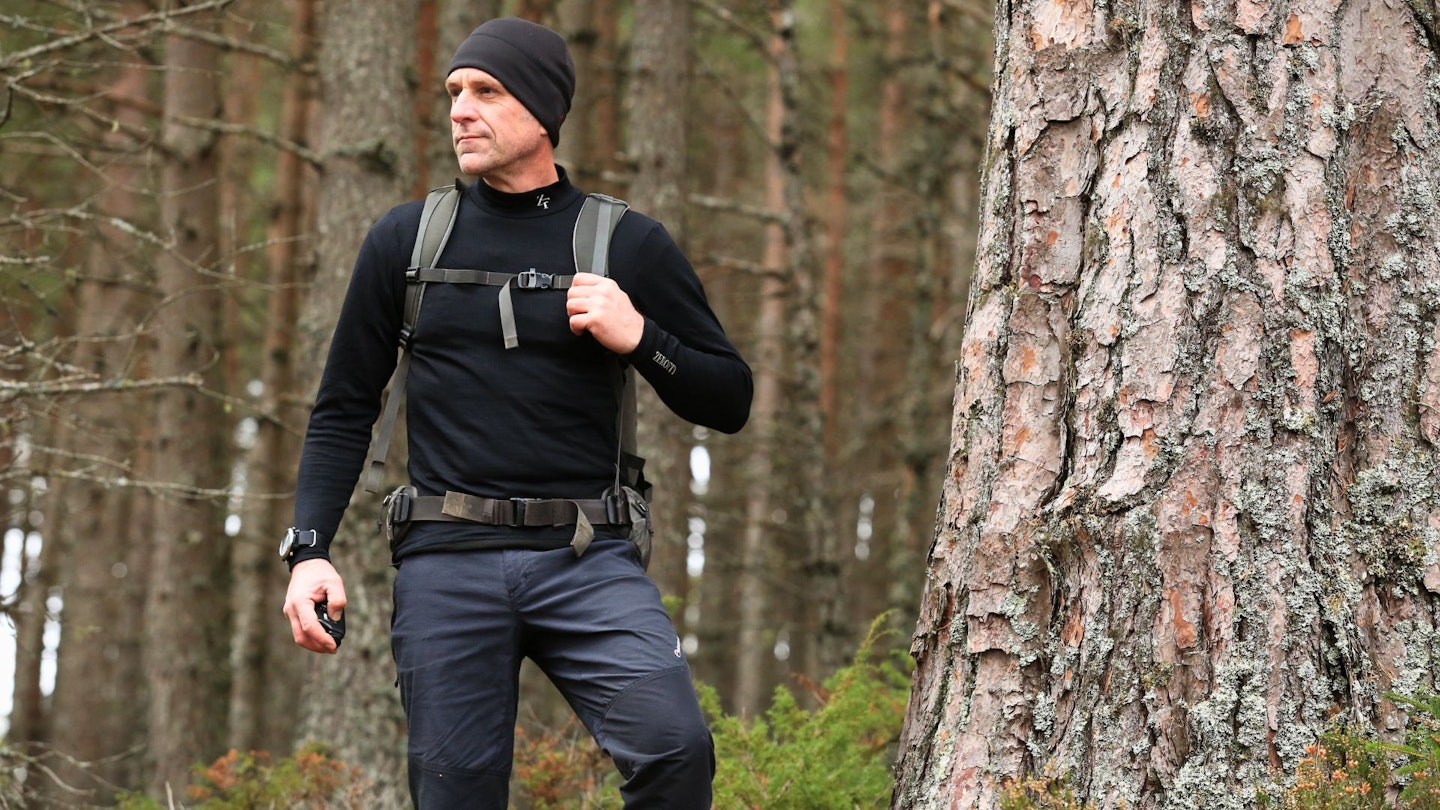
Are all base layers anti-odour?
Natural fibres like bamboo and merino are naturally odour resistant. In contrast, synthetic layers were once notorious for their pong. But fabrics are now often treated with anti-microbial technologies such as Polygiene to help prevent the growth of odour-causing bacteria.
Should I get a base layer with a zip?
Quarter or half zip-neck layers offer some ventilation and typically have a raised collar for added neck protection. But crew necks are usually cheaper and can feel more comfortable when worn as part of a layering system.
Are thumb loops necessary?
A useful but often overlooked feature, thumb loops help to stop sleeves riding up and exposing your wrists in colder conditions.
About the author

Matt Jones is a freelance gear testers for Live For The Outdoors and Trail magazine. He's walked several long-distance backpacking trails in New Zealand, the USA and throughout the UK, and is one of the most experienced and respected outdoor gear testers out there.









